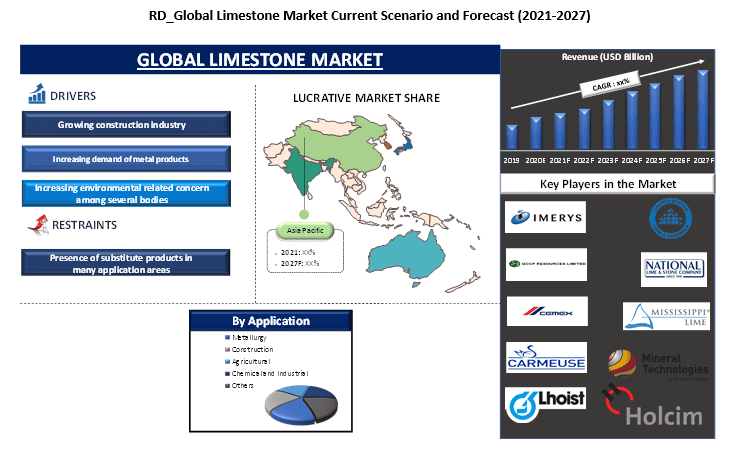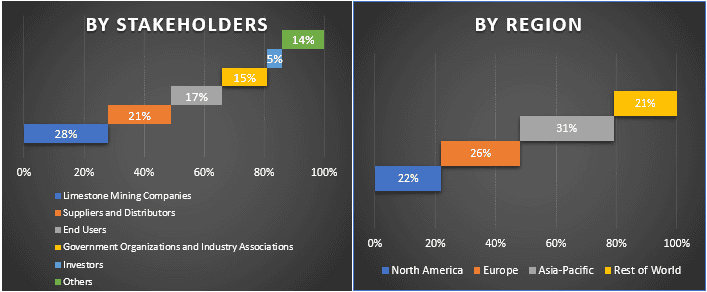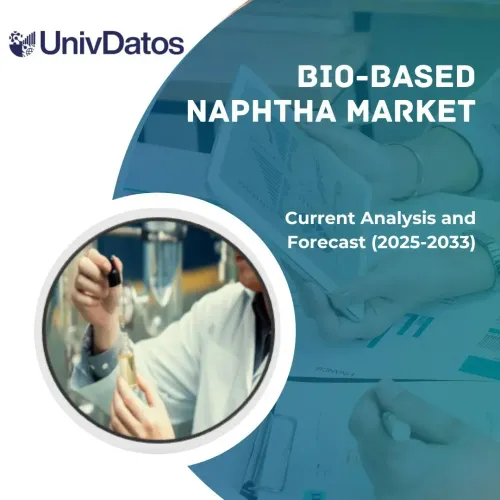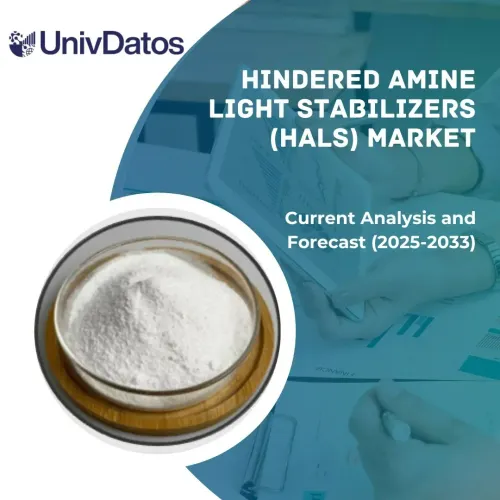- Home
- Chi siamo
- Settore
- Servizi
- Lettura
- Contattaci

Si prevede che il mercato globale della pietra calcarea dimostrerà una crescita di ~4% durante il periodo di previsione (2021-2027).I settori delle costruzioni e delle infrastrutture svolgono un ruolo fondamentale nel rendere un paese autosufficiente, di conseguenza i paesi di tutto il mondo si concentrano sulla costruzione e sul miglioramento del proprio settore edilizio. Inoltre, le economie in via di sviluppo destinano una parte significativa del loro bilancio alle costruzioni e alle infrastrutture. La pietra calcarea è un materiale importante nella costruzione di edifici, strade e altri progetti infrastrutturali in quanto fornisce bellezza estetica e una solida base. Inoltre, i consumatori preferiscono la pietra calcarea rispetto a diversi altri sostituti a causa del suo basso costo. Nel 2019, la produzione mondiale di calce si è attestata a circa 432.000 mila tonnellate metriche, di cui 310.000 mila tonnellate metriche prodotte solo dalla Cina.
Nel 2020, il COVID-19 ha colpito le industrie globali, tra cui l'edilizia, con conseguente calo della domanda di materiali da costruzione. Inoltre, l'industria siderurgica globale ha registrato solo una crescita marginale a causa dell'aumento della produzione principalmente in Cina, di conseguenza l'industria siderurgica ha registrato una bassa domanda di materiali utilizzati nella produzione dell'acciaio, tra cui la pietra calcarea. Ad esempio, ogni tonnellata di acciaio richiede da 30 a 70 kg di calce e da 100 a 200 kg di pietra calcarea per la fabbricazione.
Approfondimenti presentati nel rapporto
“Tra le applicazioni, l'edilizia ha detenuto una quota preminente del mercato nel 2020.”
In base all'applicazione, il mercato è suddiviso in metallurgia, edilizia, agricoltura, chimica e industriale e altri. Tra questi, il settore edile ha rappresentato la quota preminente del mercato. Nel settore edile, la pietra calcarea viene utilizzata per costruire una solida base per il progetto e per fornire bellezza estetica. Inoltre, la pietra calcarea viene utilizzata nella produzione di cemento, quindi l'uso diretto e indiretto della pietra calcarea nella costruzione di progetti aiuta la categoria a conquistare una quota significativa del mercato.
“L'APAC ha detenuto la quota di mercato più grande grazie alle grandi e crescenti industrie delle costruzioni e dell'acciaio”
Per una migliore comprensione dell'adozione della pietra calcarea da parte del mercato, il mercato viene analizzato in base alla sua presenza in tutto il mondo in paesi come Nord America (Stati Uniti, Canada, Resto del Nord America), Europa (Germania, Regno Unito, Francia, Spagna e Resto d'Europa), Asia-Pacifico (Cina, Giappone, India, Australia e Resto dell'APAC) e Resto del mondo. L'Asia-Pacifico ha detenuto la posizione dominante nel mercato globale della pietra calcarea e si prevede che mostrerà una crescita significativa durante il periodo di previsione grazie alla grande base dell'industria delle costruzioni e della produzione di acciaio nella regione. Inoltre, gli investimenti governativi nel miglioramento delle infrastrutture stanno spingendo il mercato della pietra calcarea.
Motivi per acquistare questo rapporto:
- Lo studio include l'analisi delle dimensioni del mercato e delle previsioni validate da esperti chiave del settore autenticati
- Il rapporto presenta una rapida panoramica delle prestazioni complessive del settore a colpo d'occhio
- Il rapporto copre un'analisi approfondita degli importanti peer del settore con un focus primario sui principali dati finanziari aziendali, portafoglio prodotti, strategie di espansione e sviluppi recenti
- Esame dettagliato di driver, vincoli, tendenze chiave e opportunità prevalenti nel settore
- Lo studio copre in modo completo il mercato in diversi segmenti
- Analisi approfondita del settore a livello di paese
Opzioni di personalizzazione:
Il mercato globale della pietra calcarea può essere ulteriormente personalizzato in base alle esigenze o a qualsiasi altro segmento di mercato. Oltre a ciò, UMI comprende che potresti avere le tue esigenze aziendali, quindi sentiti libero di metterti in contatto con noi per ottenere un rapporto che soddisfi completamente le tue esigenze.
Indice
L'analisi del mercato storico, la stima del mercato attuale e la previsione del mercato futuro della pietra calcarea sono tre passaggi principali intrapresi per creare e analizzare la sua adozione in tutto il mondo. È stata condotta un'esauriente ricerca secondaria per raccogliere i numeri storici del mercato e stimare le dimensioni attuali del mercato. In secondo luogo, per convalidare questi approfondimenti, sono stati presi in considerazione numerosi risultati e ipotesi. Inoltre, sono state condotte anche esaurienti interviste primarie, con esperti del settore lungo tutta la catena del valore del settore della pietra calcarea. Dopo l'assunzione e la convalida dei numeri di mercato attraverso interviste primarie, abbiamo impiegato un approccio bottom-up per prevedere le dimensioni complete del mercato. Successivamente, sono stati adottati metodi di scomposizione del mercato e di triangolazione dei dati per stimare e analizzare le dimensioni del mercato dei segmenti e dei sottosegmenti a cui appartiene il settore. La metodologia dettagliata è spiegata di seguito:
Analisi delle dimensioni storiche del mercato
Fase 1: Studio approfondito delle fonti secondarie:
È stato condotto uno studio secondario dettagliato per ottenere le dimensioni storiche del mercato della pietra calcarea attraverso fonti interne aziendali comerelazione annuale e rendiconti finanziari, presentazioni delle prestazioni, comunicati stampa, ecc.e fonti esterne tra cuiriviste, notizie e articoli, pubblicazioni governative, pubblicazioni dei concorrenti, rapporti settoriali, database di terze parti e altre pubblicazioni credibili.
Fase 2: Segmentazione del mercato:
Dopo aver ottenuto le dimensioni storiche del mercato della pietra calcarea, abbiamo condotto un'analisi secondaria dettagliata per raccogliere approfondimenti di mercato attuali e quote per diversi segmenti e sottosegmenti per le principali regioni. Il principale segmento incluso nel rapporto è per applicazione. Ulteriori analisi a livello regionale e nazionale sono state condotte per valutare l'adozione complessiva della pietra calcarea a livello globale.
Fase 3: Analisi dei fattori:
Dopo aver acquisito le dimensioni storiche del mercato di diversi segmenti e sottosegmenti, abbiamo condotto un'analisi dettagliataanalisi dei fattoriper stimare le dimensioni attuali del mercato della pietra calcarea. Inoltre, abbiamo condotto un'analisi dei fattori utilizzando variabili dipendenti e indipendenti come l'aumento delle attività di costruzione e la crescente domanda di acciaio. È stata condotta un'analisi approfondita dello scenario della domanda e dell'offerta considerando l'aumento degli investimenti, le principali partnership, fusioni e acquisizioni, l'espansione del business e i lanci di prodotti nel settore della pietra calcarea.
Stima e previsione delle dimensioni attuali del mercato
Dimensionamento del mercato attuale:Sulla base di approfondimenti attuabili dai 3 passaggi precedenti, siamo arrivati alle dimensioni attuali del mercato, ai principali attori nel mercato globale della pietra calcarea e alle quote di mercato di ogni segmento. Tutte le quote percentuali richieste, le suddivisioni e le scomposizioni del mercato sono state determinate utilizzando l'approccio secondario sopra menzionato e sono state verificate attraverso interviste primarie.
Stima e previsioni:Per la stima e la previsione del mercato, sono stati assegnati pesi a diversi fattori, tra cui driver e tendenze, vincoli e opportunità disponibili per le parti interessate. Dopo aver analizzato questi fattori, sono state applicate tecniche di previsione pertinenti, ovvero l'approccio bottom-up, per arrivare alla previsione di mercato fino al 2027 per diversi segmenti e sottosegmenti nelle principali regioni a livello globale. La metodologia di ricerca adottata per stimare le dimensioni del mercato comprende:
- Le dimensioni del mercato del settore, in termini di valore (US$) e il tasso di adozione della pietra calcarea nei principali mercati
- Tutte le quote percentuali, le suddivisioni e le scomposizioni dei segmenti e sottosegmenti di mercato
- Principali attori nel mercato della pietra calcarea in termini di ricavi generati. Inoltre, le strategie di crescita adottate da questi attori per competere nel mercato in rapida crescita.
Convalida delle dimensioni e della quota di mercato
Ricerca primaria:Sono state condotte interviste approfondite con i Key Opinion Leader (KOL) tra cui Top Level Executives (CXO/VP, Responsabile vendite, Responsabile marketing, Responsabile operativo e Responsabile regionale, Responsabile nazionale, ecc.) nelle principali regioni. I risultati della ricerca primaria sono stati quindi riassunti e sono state eseguite analisi statistiche per dimostrare l'ipotesi dichiarata. Gli input della ricerca primaria sono stati consolidati con i risultati secondari, trasformando così le informazioni in approfondimenti utili.
Suddivisione dei partecipanti primari in diverse regioni Ingegneria del mercato
Ingegneria del mercato
La tecnica di triangolazione dei dati è stata impiegata per completare la stima complessiva del mercato e per arrivare a numeri statistici precisi di ogni segmento e sottosegmento del mercato globale della pietra calcarea. I dati sono stati suddivisi in diversi segmenti e sottosegmenti dopo aver studiato vari parametri e tendenze nell'area di applicazione.
L'obiettivo principale dello studio di mercato della pietra calcarea
Le tendenze attuali e future del mercato globale della pietra calcarea sono state individuate nello studio. Gli investitori possono ottenere approfondimenti strategici per basare la propria discrezionalità sugli investimenti dall'analisi qualitativa e quantitativa eseguita nello studio. Le attuali e future tendenze del mercato determinerebbero l'attrattiva complessiva del mercato a livello nazionale, fornendo una piattaforma per il partecipante industriale per sfruttare il mercato inesplorato a vantaggio del vantaggio del primo attore. Altri obiettivi quantitativi degli studi includono:
- Analizzare le dimensioni attuali e previste del mercato della pietra calcarea in termini di valore (US$). Inoltre, analizzare le dimensioni attuali e previste del mercato di diversi segmenti e sottosegmenti
- I segmenti nello studio includono l'area di applicazione
- Analisi definita del quadro normativo per l'industria del calcare
- Analizzare la catena del valore coinvolta con la presenza di vari intermediari, insieme all'analisi dei comportamenti dei clienti e dei concorrenti del settore
- Analizzare le dimensioni attuali e previste del mercato del calcare per i principali paesi
- Le principali regioni/paesi analizzati nel rapporto includono Nord America (USA, Canada, Resto del Nord America), Europa (Germania, Regno Unito, Francia, Spagna, Resto d'Europa), Asia-Pacifico (Cina, Giappone, India, Australia, Resto dell'Asia-Pacifico) e Resto del mondo
- Profili aziendali degli attori del mercato del calcare e le strategie di crescita da loro adottate per sostenersi nel mercato in crescita
Analisi approfondita del settore a livello nazionale
Correlati Report
I clienti che hanno acquistato questo articolo hanno acquistato anche










